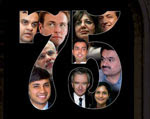IIPM INTERNATIONAL - NEW DELHI, GURGAON & NOIDA
To put in simpler words, the whole idea was to operate at a loss and just focus on garnering maximum market share in the initial phase in the hope that profits would follow soon. However, due to this flawed strategy, profits never followed and eventually, when the companies had burned most of their capital, they started falling like a house of cards.
A report published by Forrester Research in early 2000 predicted the demise of most dot-com retailers by 2001. The report’s major prediction was that the brick-and-mortar spin-offs will regain their footing. It also outlined that online retail will actually become a losing game for the traditional merchants, based on the assets like customer history, product selection, fulfillment and manufacturer relationships, which are a given in the case of brick & mortar retailers.
Casualties of the dot com bust were most new Internet start-ups, which boasted of a unique business model. Companies like online grocer Webvan became the poster children of the dot com burst. Webvan had a unique idea of selling groceries online and wanted to grow very fast. Indeed, it became a $1.2 billion company before low grocery margins took a toll on its flawed business model. Similar was the case of Pets.com, a company that sold pet supplies online. Problem with Pets.com was that when it came to the shipping cost, it undercharged its customers, which resulted in a high pressure on its margins, leading to a collapse, nine months after it raised $85 million through its IPO.
Interestingly, according to analyst Sebastian Rupley, “Even the dot-com sites that survived often came perilously close to severe setbacks and have had to retool their businesses quickly. During 2000, hundreds of dot-com companies, such as drkoop.com, received notice from the NASDAQ stock exchange that their stocks could be delisted, because their share prices had dipped below $1!”
If one considers all the above examples and the trends that led to their debacle, the global Internet economy looks to be heading towards yet another dotcom burst. “Today, everything from YouTube to the local church has a social-networking angle. And this doesn’t even consider the actual social-networking sites, from MySpace to LinkedIn to Facebook to even ‘Second Life’. This scene is totally out of control and will contribute to the collapse for sure,” says Dvorak.
Well, shouldn’t the Internet economy take lessons from the 2000 bubble burst and see that the Internet giants are not moving in a similar direction? If they do not undertake well informed strategic decisions, they are going down the same road. Well, its too hard to predict the next bust and its severity, but people are no longer denying the possibility. As Dvorak adds, “Each succeeding bubble has been worse than its predecessor. Thus nobody is actually able to spot the cycle... I can assure you that after this next collapse, nobody will think of the dot-com bubble as anything other than a prelude.” So, in essence, we could perhaps safely conclude that not much has changed.
For more articles, Click on IIPM Article.
Source : IIPM Editorial, 2008
An Initiative of IIPM, Malay Chaudhuri and Arindam chaudhuri (Renowned Management Guru and Economist).
For More IIPM Info, Visit below mentioned IIPM articles.
IIPM - Admission Procedure
IIPM, GURGAON
IIPM : EXECUTIVE EDUCATION
IIPM’s 36th Glorious Year of Academic Excellence
IIPM Ranked No. 1 B-School In Global Exposre - Zee...
4Ps Power Brand Awards 2007
When IIPM comes to education, never compromise
IIPM is A World of Career
Why Study Abroad When IIPM Gives You 3 global Advantages!
IIPM Ranked No. 1 B-School In Global Exposre - Zee...


